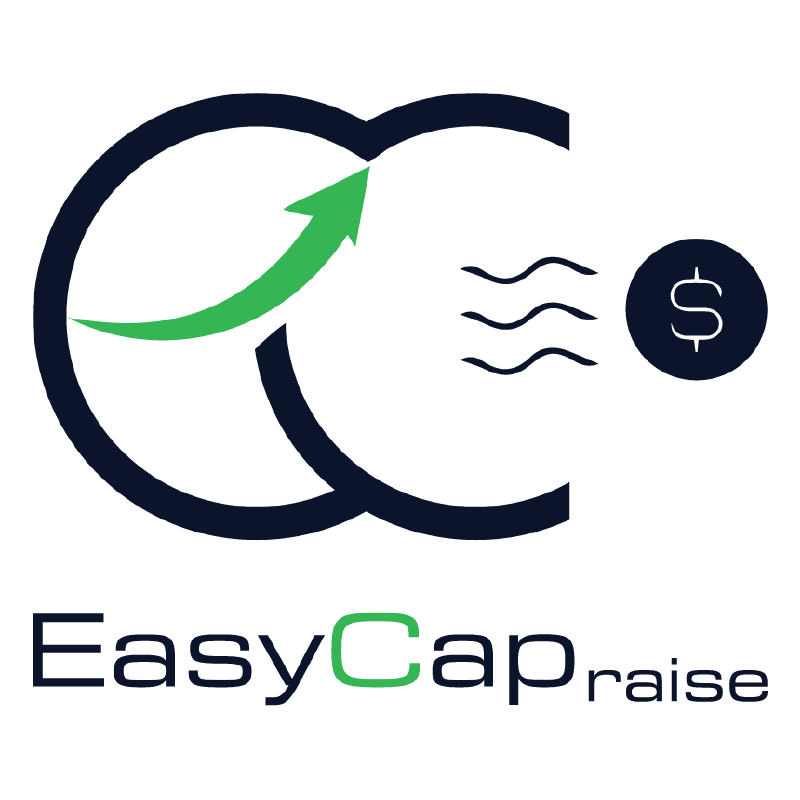A sales deck persuades customers of the product’s value. Businesses using it are 60% more likely to close deals. Crafting it involves audience, story & evidence.
The Art of Selling: How to Create a Sales Deck That Convinces and Closes

The Power of Persuasion: Understanding the Importance of a Sales Deck
A sales deck is a visual presentation that is used to communicate the value of a product or service to potential customers or investors. It is an essential tool for any company looking to sell its products or services to other companies. A well-designed and compelling sales deck can be the difference between closing a deal or losing it.
A sales deck typically includes key information about the product or service, such as its features and benefits, as well as information about the company. It also includes customer testimonials and case studies. It serves as a powerful tool to communicate the value of the product or service and to persuade potential customers to take action.
According to a recent survey, businesses that use a sales deck in their sales process are 60% more likely to close a deal. This is because a sales deck provides a clear and concise summary of the product or service, making it easy for potential customers to understand the value proposition. A sales deck also allows you to showcase the results of your product or service, which is a crucial step in building trust with potential customers.
In this article, we will be discussing the key elements of a sales deck and how to create one that will help you close more deals. We will also share our recommended outline for a winning sales deck and the importance of design in creating a sales deck that stands out.
Key takeaways:
- The first and most important step in creating a compelling sales deck is to understand your target audience. Before you start creating your sales deck, it’s crucial to conduct research on your target audience.
- Choose the right story for your target audience. There are two main types of stories that are most effective in capturing the attention of your target audience: a trend story and a problem story.
- Use a consistent design aesthetic, high-quality images, simple design, infographics, white space, and storytelling to create a visually impactful sales deck that stands out and sells.
- Professional services can help you to save time and create a sales deck that is both effective and visually impactful.
Crafting a Winning Pitch: A Step-by-Step Guide to Creating a Compelling Sales Deck
The first and most important step in creating a compelling sales deck is to understand your target audience. Before you start creating your sales deck, it’s crucial to conduct research on your target audience. Who are they? What are their pain points? What are their interests? What are the current trends in their industry? By doing research, you will be able to understand your target audience and tailor your sales deck to their specific needs.
After you have fully understood your target audience, the next step is to craft a story that best fits them. There are many stories you can have for selling your product, but our experience has narrowed it down to two main stories: a story based on a trend or a story based on a problem. These two stories are the most effective in capturing the attention of your target audience and highlighting how your product or service can solve their pain points.
In this guide, we will provide you with an outline for creating a sales deck based on a trend, and another outline for creating a sales deck based on a problem. This way, you will be able to choose the best approach for your target audience, craft a story that best fits them, and increase your chances of closing a deal.
The Winning Formula: Our Recommended Outline for a High-Converting Sales Deck
Now that you have a clear understanding of your target audience, it’s time to choose the right story to showcase your product or service. There are two main types of stories that are most effective in capturing the attention of your target audience: a trend story and a problem story.
When to use a trend story:
- When you want to capitalize on emerging trends in your industry or market
- When you want to create a sense of urgency or generate demand for your product or service
- When you want to highlight the potential negative consequences of not taking action, such as missing out on a limited-time offer or falling behind the competition
Outline for a trend story:
- Name a Big, Relevant Change in the World: What attracts audience attention is change. The way in which a story begins is a starting event that creates a moment of change.
- Show There’ll be Winners and Losers: All prospects suffer from what economists call “loss aversion.” They tend to avoid a possible loss by sticking to the status quo.
- Tease the Promised Land: Present a “teaser” vision of the happily-ever-after that your product/service will help the prospect achieve.
- Introduce Features as “Magic Gifts”: Introduce the features of the product or service and how they align with the trend you’re trying to capitalize on.
- Present Evidence: Show that you can make the story come true. If they go with you, you’ll get them to the Promised Land.
- Call to Action: Encourage your target audience to take action and try your product or service.
When to use a problem story:
- When your customers are well-informed and have access to a lot of information and options.
- When you can differentiate yourself from the competition and position the product or service as the best solution for the customers.
Outline for a problem story:
- The Problem and Who Has It: Starting with this step is an effective way to establish the customer’s needs, establish you as a trusted advisor, set the stage for the rest of the presentation, engage the customer, and identify the right target audience.
- Existing Solutions and Their Challenges: By presenting a clear and objective overview of existing solutions, you can demonstrate your expertise and position your proposed solution as the best option available.
- What’s Changed: This will help to demonstrate the relevance of the proposed solution, address objections, show the uniqueness of the proposed solution, build credibility, and make the customer more willing to invest.
- How Your Solution Works: A detailed overview of how the proposed solution addresses the customer’s needs and how it works to solve the problem. This is where you can increase the chances of a successful sale.
- Proof of a Better Solution: Provide evidence or testimonials of the effectiveness of your product or service in solving the problem.
- Call to Action: By providing pricing and a clear call to action, you are able to bring the sales process to a close.
It’s important to note that there may be other cases that do not fit into the trend or problem story categories and may require more research and crafting a unique story outline. In these cases, it may be beneficial to seek professional advice to help you identify and create a story that best fits your specific target audience and product or service. A professional can help you to find the most effective way to communicate the value of your product or service to your target audience and increase your chances of closing a deal.
Visual Impact: How to Design a Sales Deck that Stands Out and Sells
A well-designed sales deck not only captures the attention of your target audience but also showcases your product or service in the best light. Good design can make a significant impact on how your target audience perceives your product or service and can ultimately influence their decision to buy. In this section, we will be discussing the key elements of visual design and how to create a sales deck that stands out and sells.
Use a consistent design aesthetic: A consistent design aesthetic will help to establish your brand and make your sales deck look professional. Use your brand colors and typography throughout your sales deck.
Use high-quality images: Use high-quality images that are relevant to your product or service and that showcase its features and benefits. Avoid using stock images that do not align with your brand or product.
Keep it simple: A cluttered design can be overwhelming and can detract from the key message of your sales deck. Keep your design simple and easy to understand.
Use infographics: Infographics are a great way to present complex information in a simple and easy to understand format. Use infographics to highlight key statistics and data related to your product or service.
Use white space: White space is an essential design element that can help to make your sales deck look cleaner and more professional. Use white space to separate different sections of your sales deck and to make important information stand out.
Use storytelling: Use storytelling to make your sales deck more engaging and memorable. Use illustrations, icons, and images to help you tell a story about your product or service and how it can help your target audience.
By following these tips, you can create a visually impactful sales deck that stands out and sells. Remember, a well-designed sales deck is essential for any company looking to close deals and grow its business.
Creating a compelling sales deck is essential for any company looking to close deals and grow its business. However, crafting an effective sales deck can be time-consuming and requires expertise in both design and storytelling. We have a team of expert designers and writers who can help you to save time and create a sales deck that is both effective and visually impactful.
In addition to our sales deck writing and design services, we also offer pitch script and video deck services. A pitch script is a written document that outlines the key points of your sales pitch, while a video deck is a short video that showcases your product or service and highlights its features and benefits. Both services can help to increase the impact of your sales pitch and increase your chances of closing a deal.
Don’t hesitate to book a call and let us help you to have a winning sales deck that will help you to close more deals and grow your business.
Summary:
In summary, the article is a guide on how to create a winning sales deck that persuades and closes deals by understanding the target audience, crafting a story that best fits them, and providing tips on design and professional services that can help you to create a sales deck that stands out and sells.
FAQ About Sales Deck:
What is a sales deck and why is it important?
A sales deck is a visual presentation that is used to communicate the value of a product or service to potential customers or investors. It is an essential tool for any company looking to sell its products or services to other companies. A well-designed and compelling sales deck can be the difference between closing a deal or losing it.
What are the key elements of a successful sales deck?
The key elements of a successful sales deck include understanding the target audience, crafting a compelling story, key information about the product or service, customer testimonials, case studies, and a clear and concise summary of the product or service’s value proposition.
How can understanding the target audience help in creating a sales deck?
Understanding the target audience is crucial in creating a sales deck because it allows you to tailor the sales deck to their specific needs. This includes conducting research on the target audience’s pain points, interests, and current trends in their industry.
What are the two main types of stories that are most effective in capturing the attention of the target audience?
The two main types of stories that are most effective in capturing the attention of the target audience are trend stories and problem stories. A trend story capitalizes on emerging trends in the industry or market, while a problem story highlights how the product or service can solve the target audience’s pain points.
What is the recommended outline for a high-converting sales deck?
The recommended outline for a high-converting sales deck includes naming a big, relevant change in the world, showing there will be winners and losers, teasing the Promised Land, and presenting the solution (your product/service). It also includes highlighting the benefits and proof points of your product/service and providing a call to action.
Contact us
Good to have you here! If you have any queries, please leave your message. Our team will reach out soon:)
.




